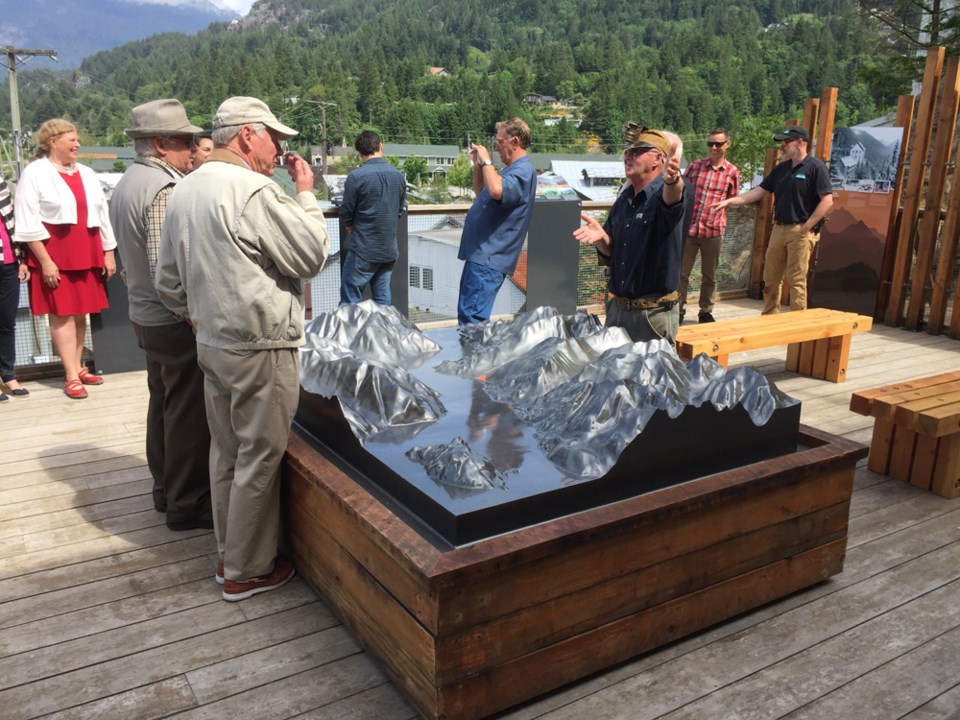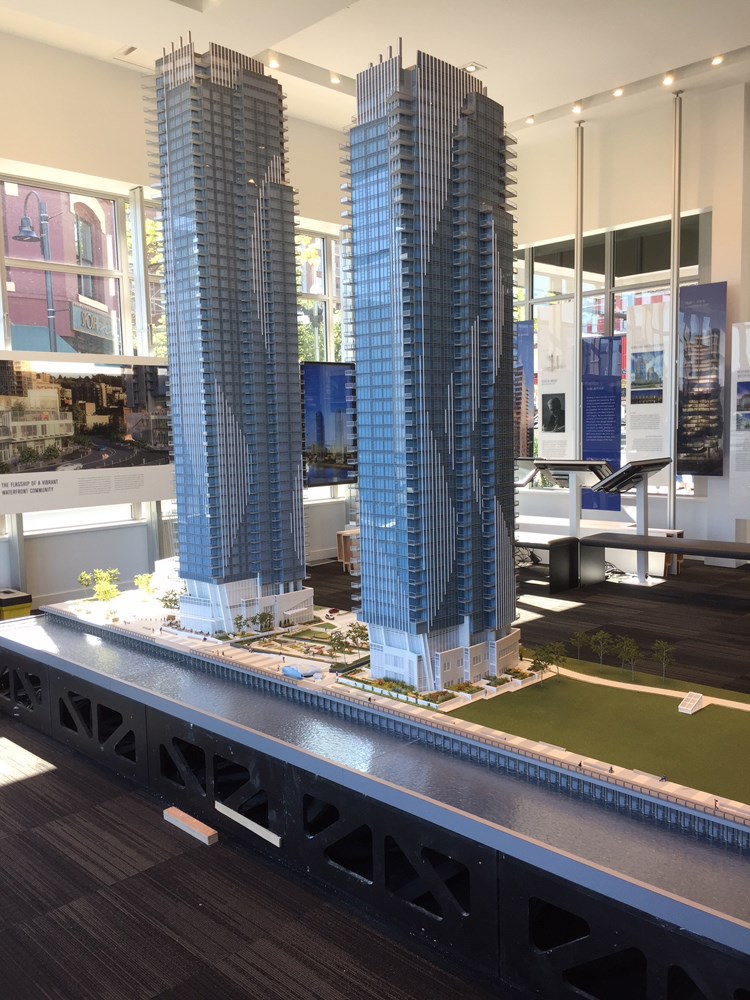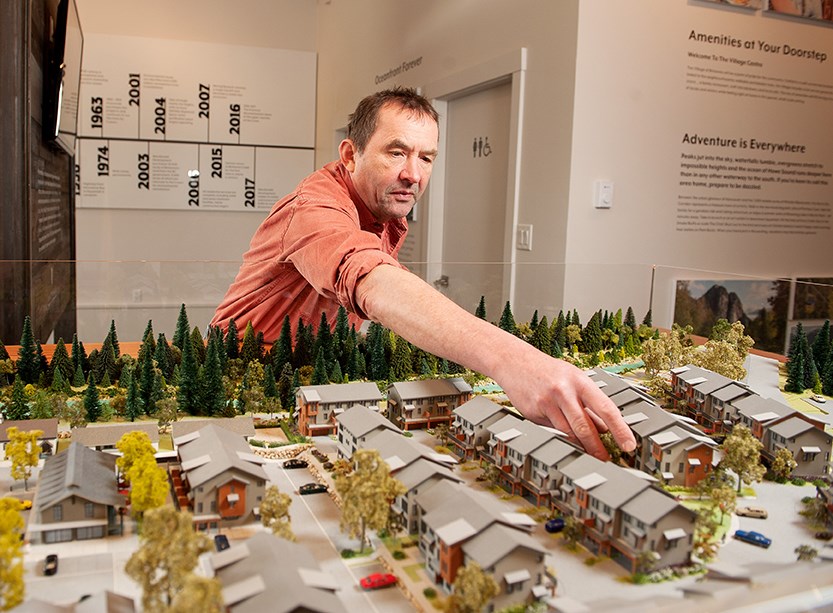It is hard to truly visualize a neighbourhood or a development before it exists. That is where Britannia Beach's Mark Sampson comes in.
The owner of The Model Shop makes architectural models, including one for the Macdonald Development project slated for his own community, which has been on display at recent open houses and public hearings.
The Chief caught up with Sampson for a chat about his job and life in Britannia.
What follows is an edited version of that conversation.
Q: How did you get into this unique career?
A: I started as an apprentice in England in 1977. I was offered it out of school. I was at that critical point where people either went to university or went off to work in a coalmine, or whatever. Previous to that, I think people thought I might go into drafting, based on subjects I was interested in. But I was connected with a company that was starting and they were looking for a trainee to do this kind of work. I didn't know this kind of work existed, before that.
Q: Do you still enjoy the work all these years later?
A: Yes! The work is always changing — especially with technology.
Thirty per cent of my work is on a computer now.
That is the biggest thing that changed. We make models that we would have needed a staff of 10 to make back in the day.
I am having more fun than ever, with the company being as small as it is now. We went through a mushroom cloud of growth in the 1990s and 2000s. We had 35 staff at one point. We were the biggest company doing this work in Vancouver for a time. Then 2007/2008 happened and everything crashed through the floor.
We had always been in the city because of all the people we had working for us. So that is when we started looking at property up here and got whiff of Britannia Beach.
We [Sampson and partner writer Alex Gabriel] always used to play in the Sea to Sky. Here is very much home to us.
Q: How long have you lived in Britannia?
A: I have been here since 2011. I emigrated from England though in 1981. I came for work. It is such a specialized skill that I was able to get sponsored by a company in Richmond. There was a real shortage of people who do what I do.
Q: What talent or interest should a young person show that would demonstrate an aptitude for architectural model making?
A: If they make things. For as long as I can remember, I made stuff. I didn't come from a particularly rich upbringing, so we didn't get a lot of plastic toys. I was basically given boxes and I made something out of them. You can chart the progression of these things by what people play with as a kid.
Q: Can you walk me through the process of making a model?
A: It starts with the design information from the architects. We make what other people design. We collect information from two or three different sources. We scale all of their information down to the size of the finished product. By scaling the whole thing down, it helps you understand what you are going to create. From all the resource information, I have to make a little kit for each building.
There's the design phase, that is about 30 per cent, then it goes from there to one of our three laser cutting machines that produce the pieces from sheet material. Then the pieces are all put together — cleanly — then painted.
Beyond the buildings, you also have the landscapes.
Q: Some models have little people. Where do those come from?
A: For the most part, those are bought or borrowed from what used to be model railroading, which is becoming a bit obsolete. Now with digital printing, we can print people. You can go to a website and buy the 3D file and make them any size you want. But that can be expensive. That is where the differences in presentation come in these days with models. You can do anything, but you have to do it to a price point.
You can have lights in every window that work differently if you want to pay for that.

Q: This is an unfair question, but what projects stand out for you in your career?
A: A few.
The largest model I have ever made was Pier West in New Westminster for Bosa. The buildings were 10 feet high.
There are two towers, 700 residences. It is 15 feet long — a huge display.
The outdoor model at the Britannia Mine Museum was another one. They did a project of putting the mine into a local context with Howe Sound and where the mining operations were.
That was one of the coolest projects I have done because it is right where we live. We are in the middle of it. It involved a lot of computer work to create a 3D surface.
Most of our stuff is around for the presale portion of a project. This one will be there for a long time.
And while I was working on it, at the same time, I was working on the Macdonald Development.
Over the years we have done so many resorts and ski hills and all kinds of different things, but to have those two models so recent and so local — they were all made in Britannia. That is as local as it gets.

**Please note, this story has been corrected since it was first published. The Bosa Development Pier West tower model is 10 feet high, not 10 stories-high.



